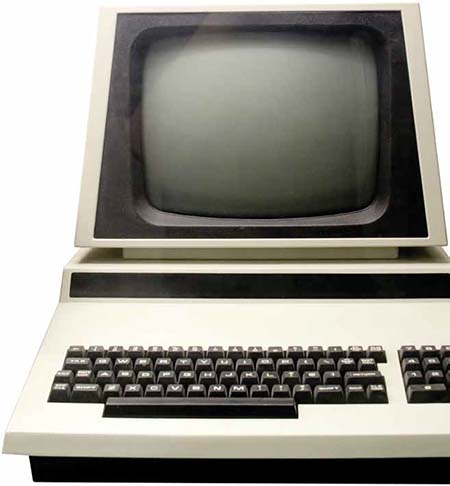Back to the Future

My first direct encounter with the personal computer came during the winter of 1981 as part of a diagnostic/prescriptive reading course I was taking at Wingate College for teacher recertification. The instructor, Dr. Henry Funderburk, also ran a commercial learning clinic on the side.
For one class session, Dr. Funderburk invited us on a tour of his clinic to see some of the diagnostic instruments they used. Upon entering the main room, I noticed a Radio Shack TRS-80 Model I computer, an intimidating beast of battleship gray.
As the tour ended, I asked, “What do you do with that computer?” pointing toward the incomprehensible machine.

He chuckled and said, “I’m glad you reminded me.”
Walking us over to the computer, he sat me before the machine, utterly unaware of how profoundly my life was about to change. Dr. Funderburk flipped a switch, and the screen took on a barely discernible green tone. After a moment, legal text appeared, followed by this prompt:
READY
>
I felt as if my brain had been wrenched free of half its moorings. This machine was talking to me. It was telling me that it was “ready.”
Tools and ideas to transform education. Sign up below.
Dr. Funderburk leaned over and typed, “CLOAD,” and a cassette player next to the computer started running—and the rest of my grip on reality, as I knew it, broke lose. Dr. Funderburk was talking to the machine, telling it what to do, and asking it to load a program from a cassette.
After the READY message appeared again, he typed “RUN.”
On the screen appeared the word “Menu,” followed by a list: “addition,” “subtraction,” “multiplication,” and “division.” Each option had a letter: A, B, C, or D, all followed by instructions: “Type a letter to choose your option.”

At this point, I was on the floor. The computer was telling me how to operate it. I pressed “D” for division, and worked through the steps for solving a division problem displayed on the screen. Working around to the answer, I sat back at the computer and for the next 60 seconds, pixel by pixel, a simple smiling face appeared. Next, I purposely entered a wrong answer and a frowning face replaced the smiling face, which was even more exciting.
I could not have explained this at the time, but I had always taught history as a progression of technological advancements, each affecting our cultures in logical though sometimes unpredictable ways. The bow and arrow, agriculture, steam power, and electricity all changed us in specific ways.
When I looked at that frowning face on the screen, I thought, “This is a machine that we operate by communicating with it. This is one of those technologies that will change us—profoundly.” I was seduced and I wanted to learn all that I could about this personal computer.
At the beginning of the next school year I learned that 11 computers had been purchased for my middle school and, since none of the other teachers wanted one, all 11 Radio Shack Model III computers were waiting in my classroom—16 kilobytes of memory each. These things were HOT!
Surprisingly, there was no software. Apparently, it was believed that the green glow from those cathode ray tubes, washing over our children’s faces, would make them smarter. I set out to teach myself how to write computer programs.
Not only was I suddenly thankful for my high school typing class, but at the end of my first afternoon as a programmer, I got down on my hands and knees and thanked every algebra teacher I had ever had. The logical instructions that I was conceiving to make the computer do what I wanted were mostly being expressed as algebraic equations. There was finally a reason for algebra.
But there was a significant difference. Rather than solving for X (if Y equals this, then what is X?), I was figuring out how to mathematically affect X so that Y would behave the way that I needed in order to calculate the right date or race a pixel across the screen. I was beginning to understand that what we were teaching our children was far more important than I had ever imagined—and that how we were teaching it might be all wrong.
